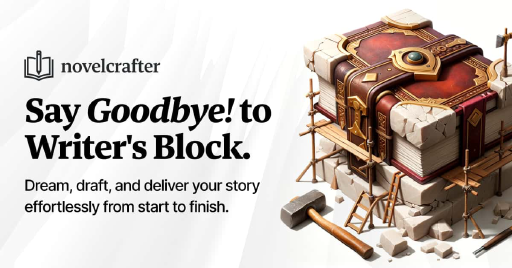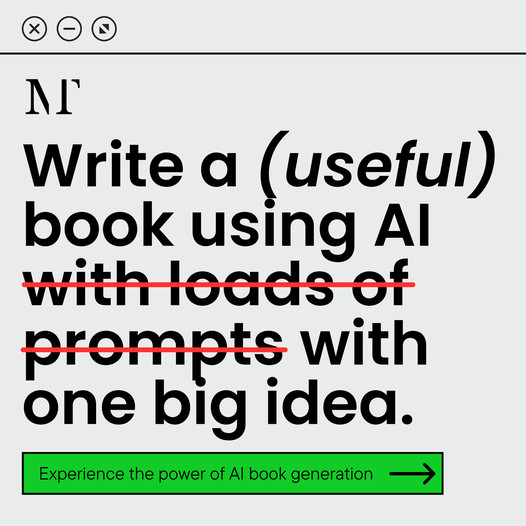Crafting a Compelling First Chapter
Importance of the First Chapter
Writing that elusive first chapter can be like finding the start button on a remote in the dark. It introduces your story, shaking hands with the reader, and sparking their curiosity to finish the whole book. Nail this part, and folks won’t put your book down. As Jenna Moreci wisely points out, it’s where you bait the hook, reel in the reader, and lay the foundation for everything else.
Plus, don’t even think about skipping the whole genre deal in that opener. Show your cards from chapter one so readers know if they signed up for sci-fi adventyure or a romantic rollercoaster. That opening chapter kinda signals to readers what kind of ride they’re hopping on, according to Kingdom Pen.
Elements of a Great First Chapter
What ingredients cook up a killer first chapter? Blend these key elements together and you’ve got a recipe for pulling your readers in:
| Element | Description |
|---|---|
| Hook | Kick off with a zinger – a line that slaps you awake. It’s gotta catch eyes without twisting brains. |
| Main Character | Walk in your hero or heroine into the scene, introducing them in their natural habitat. Show ‘em off and get folks invested in who they are and where they’re headed. |
| Tone | Match the mood of this chapter with your story’s overall vibe. Get the readers on the same wavelength from the get-go. |
| Genre Establishment | Be upfront about where your story belongs: mystery, brother! Sci-fi or fantasy? Let ‘em know. |
| Intrigue | Sprinkle some questions and mysteries. Tease a bit to make ’em clamor for more. |
When you piece these elements together, your first chapter becomes a magnet, pulling folks right into your storyline. If you’re looking to sharpen your first chapter skills, peek at our beginner writing tips and stretch those creative muscles with creative writing exercises while crafting that opener.
Setting the Tone and Establishing Intrigue
When starting a story, you want that first chapter to be super inviting, the kind folks can’t help but jump right into. It’s like setting the stage for a show where the spotlight’s on your main character. We’ll explore how to reel folks in and set up your hero.
Snagging the Reader
The start of your chapter is your chance to catch the reader’s eye. Forget overcomplicated; what you want is something powerful and punchy that piques their interest. Even a simple line can do the trick. Jenna Moreci says not to get bogged down over it. Sometimes, a cool word or catchy phrase is all it takes.
Try on some of these ideas for creating your hook:
| Technique | What it Means |
|---|---|
| Jump in “In Medias Res” | Throw readers straight into the action. |
| Drop Intriguing Dialogue | Start with a chat that hints at drama or secrets. |
| Pose a Provocative Question | Ask something that gets readers pondering. |
| Paint with Descriptive Imagery | Craft images that stir feelings and arouse interest. |
These techniques can act like a “come to me” signal for your budding story enthusiasts.
Establishing the Main Character
Getting your main character into the spotlight early on helps readers latch onto them. Put them in their natural element to give a taste of who they are, laying a path for their growth as the plot thickens. The folks at Kingdom Pen suggest this approach as it lets readers connect quickly.
Here’s how you can effectively shine a light on your main character:
 What Poetry Feels Like
What Poetry Feels Like| Strategy | What it Means |
|---|---|
| Show Their Environment | Spot the character where they’re at ease or tested. |
| Highlight Unique Traits | Pinpoint quirks that make the character stand out. |
| Use Action or Conflict | Introduce them through decisions or actions in tough spots. |
By drawing your main character vividly right from the start, you pave a warm welcome for readers to follow along their ride. And as you pen down these, consider leaning on resources such as how to create realistic characters and tips for writing a novel to polish up your storytelling mojo.
Creating Engaging Scenes and Questions
Creating an irresistible story right from the first chapter can hook readers like fried chicken on Sunday. Here’s how you can keep the pages turning.
Engaging Opening Scene
Kick things off with gusto! Your opening should throw readers into the thick of it. Picture this: the chaos, the sweat, the heartbeat that makes them feel alive in your story’s world. Pop right into the action; don’t dawdle. Jumping into a pivotal point gets their adrenaline pumping (BookBub’s sage advice).
Take a page from “The Hunger Games.” We start in District 12 on Reaping Day, eye-to-eye with tension and urgency. It was no ordinary school day for Katniss—now ain’t that intriguing?. You don’t need verbose babbling to draw readers in—a punchy, powerful sentence can do wonders (Jenna Moreci is onto something).
Leaving Readers Curious
Once you’ve caught the readers’ attention, leave ’em hanging like a cliffhanger in the middle of a soap opera. Curiosity is the magnet that pulls them forward. Let them stumble upon some mysteries that dance in their minds long after they’ve closed the book.
Think about what shadows cloak your characters. What crossroads do they stand at, the outcome teeter-tottering in the balance? For instance, “The Hunger Games” knows how to stack questions. What’s District 12’s deal? What’s gonna happen to our girl, Katniss? Readers just gotta know (as Ms. Gilbo points out).
Here’s a handy-dandy table to brainstorm questions that’ll keep your story buzzing like a caffeine-fueled workshop:
| What’s on Your Mind? | For Example: |
|---|---|
| What’s driving this character? | What’s at stake for Katniss in the games? |
| What’s up with this world? | Why’s everyone and their cat penned up like this in the districts? |
| Where’s this plot heading? | What’ll explode if the protagonist flubs their quest? |
These inquiries aren’t just catalysts for plot—they’re what give your audience the feels. When emotional stakes are high, nobody’s putting that book down. For more juicy bites on character emotions and plot weaving, peek at our character tips and plot wizardry.
By perfecting a hard-hitting opener and spurring reader curiosity, you’re setting the stage for a showstopper first chapter that keeps them hungry for more.
Connecting with Readers Emotionally
You wanna hook your readers right from the jump? It’s all about creating that emotional bond in your opening chapter. Think of it like building a bridge between your book and their hearts. You want them glued to every word, hungry for the next twist in the tale.
Developing Reader Empathy
Make your audience feel for your characters by serving up someone they can relate to. Toss them into a sticky situation and boom—you’ll have readers diving into their feelings, rooting for them from page one. Take Katniss from “The Hunger Games” as a case in point. She walks into our lives as a teen shouldering big responsibilities, gutsy enough to step up for her sister in a life-or-death showdown. Right there, you’re sucked into her world, cheering for her from the sidelines (Savannah Gilbo).
Here’s how you can crank up that character empathy:
| Strategy | Description |
|---|---|
| Get Vulnerable | Show their flaws and fears—make ’em real. |
| Dabble in Backstory | Give peeks into their past to color their present. |
| Display Emotional Rollercoasters | Lay bare their feelings and reactions to the chaos around them. |
By rolling out these tactics, you let readers latch onto your characters emotionally, sinking deeper into the story with every turn of the page.
Establishing Stakes
Lay the stakes out early, and watch readers squirm with curiosity and concern. You gotta set up those what-ifs and oh-nos right from the start. In “The Hunger Games,” Katniss is teetering on the edge, and the tension is real. You feel that knot in your gut urging you to keep flipping those pages.
Stakes can slide in all kinds of shapes and sizes:
| Type of Stakes | Example |
|---|---|
| Physical Stakes | Characters might dodge real danger or harm. |
| Emotional Stakes | What happens could take an emotional toll on them or their kin. |
| Societal Stakes | Actions and results could shake up their community or society. |
Nail those stakes, and your first chapter will pack a punch, leaving readers reeling for more. For tips on crafting such a powerful opener, dive into resources like writing advice for new authors and how to write better stories.
Techniques for an Impactful Start
Getting your readers hooked from the get-go doesn’t happen by accident. You’ve gotta use a few tricks to make your first chapter irresistible. Two game-changing approaches are jumping “in medias res” and giving your readers a variety of angles with multiple character perspectives.
Starting “In Medias Res”
Kicking things off “in medias res,” or slap bang in the middle of the story, is like a shot of adrenaline straight into your reader’s veins. Gone is the lengthy intro—they’re thrown into action right away. This sets up that heart-pounding urgency and cranks the suspense up a notch, so they can’t help but read on to find out what on earth’s happening.
Take “The Hunger Games,” for instance. It sweeps readers away with action scenes, and mysteries about Katniss pop up left and right, making everyone wonder, “What’s her deal?” When you start with big sparks like danger or drama, make sure they fit your genre—it’s like setting the stage with fireworks (Savannah Gilbo).
Using Multiple Character Perspectives
Another solid trick is throwing in different character perspectives right from the start. This doesn’t just tell a story, it pulls readers into a world where they see bits and pieces of the characters’ lives and the hurdles they face. Bringing in a new set of eyes to narrate can spice things up, keeping folks on their toes and wanting more (BookBub).
It’s like giving tiny puzzle pieces that hint at bigger mysteries or themes. These multiple viewpoints weave together, drawing readers into a web of emotional ties and making them flip pages to connect the dots.
Test ’em out. These techniques aren’t just about making the first chapter snappy—they lay down some serious groundwork for your story. Want more writing advice? Dive into our novel tips or shake up your routine with our creative writing exercises.
Making Your First Chapter Shine Without Overloading
Gettin’ that first chapter just right is like trying to walk a tightrope. You want to spill just enough beans to keep readers curious but not so many that they drown in details. Here’s how to keep ’em hangin’ on.
Keeping Information in Check
Nailing that first chapter ain’t easy—it’s where readers meet your world and your crew. You gotta be smart about how much info you drop. No one likes a firehose of facts. Tease out those big questions, make folks wanna know more about what makes your characters tick. Wrap up every chapter with a cliffhanger, so they just can’t stop turning the pages.
Check out these tips for spreading out the good stuff:
| How-To | What To Do |
|---|---|
| Reveal Your Cast | Give just enough backstory so folks understand the ‘why’, and save some juicy bits for later. |
| Chat It Up | Let your characters spill secrets in conversations, not speeches. |
| Keep ‘Em Guessing | Drop hints of mystery or drama without filling in every blank. |
| Close with Bangs | Leave a question dangling to make readers itch for answers. |
Every nugget of info should pull its weight, helping set the scene and build characters without leaving readers feeling swamped.
Getting the Thumbs-Up from Others
After scribbling down your first draft, getting some outside eyes on it can be a game-changer. Feedback from other writers or pros can spot the bits that might baffle readers or give you ideas to juice up your story.
Here’s where to find some honest opinions:
| How-To | What To Do |
|---|---|
| Writer Groups | Hook up with other writers in real life or online, swap stories, and share feedback. |
| Beta Buddies | Gather up some people who you’d love as readers, and hear what they think. |
| Paid Pros | Sometimes it’s worth hiring an editor who knows their way around a debut chapter. |
| Internet Hangouts | Dive into online spots where writers meet and swap snippets for critiquing. |
Besides getting feedback, check out handy resources that can step up your writing game, like how to write better stories or beginner writing tips. Listening to others and sharpening your skills can make your first chapter irresistible right from the get-go.

 Grab my poetry book, 'we're all just wanderers in the end' Here
Grab my poetry book, 'we're all just wanderers in the end' Here AD: Your Book Finally Written...
AD: Your Book Finally Written...